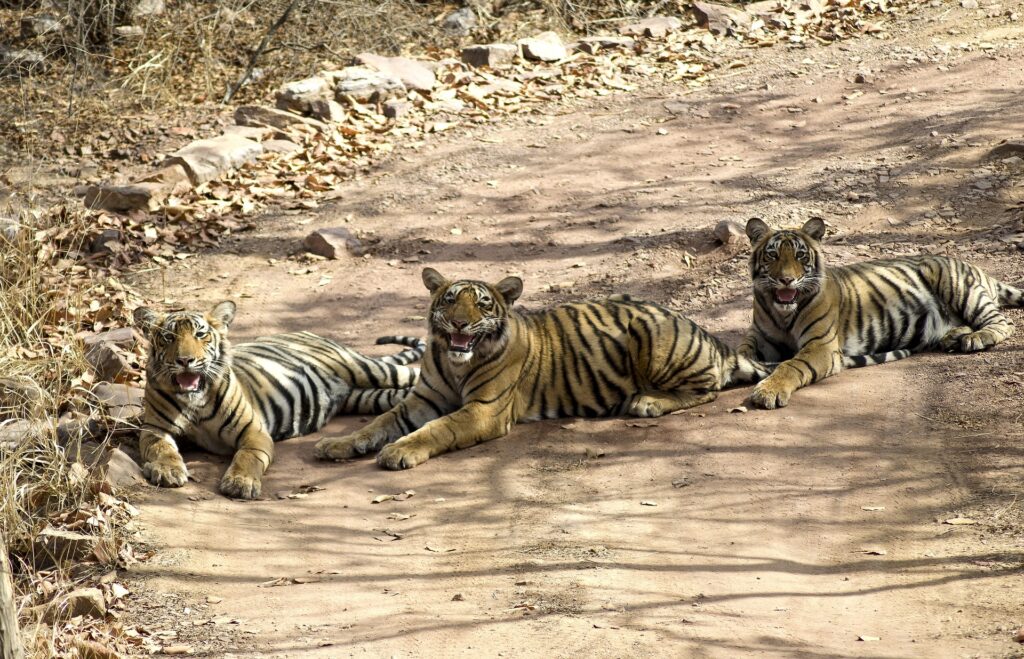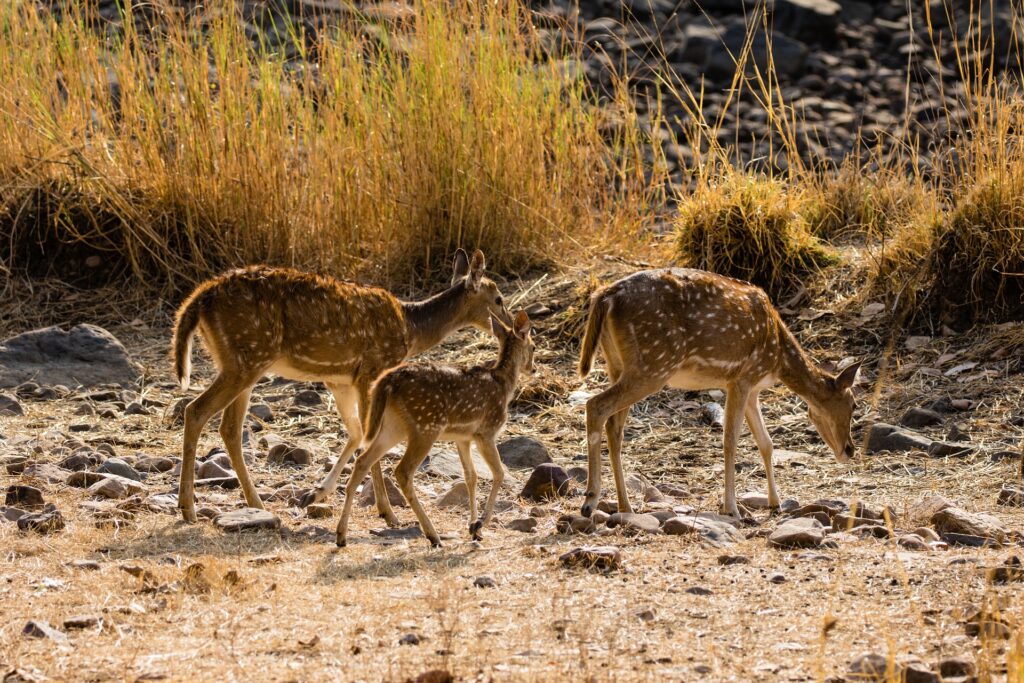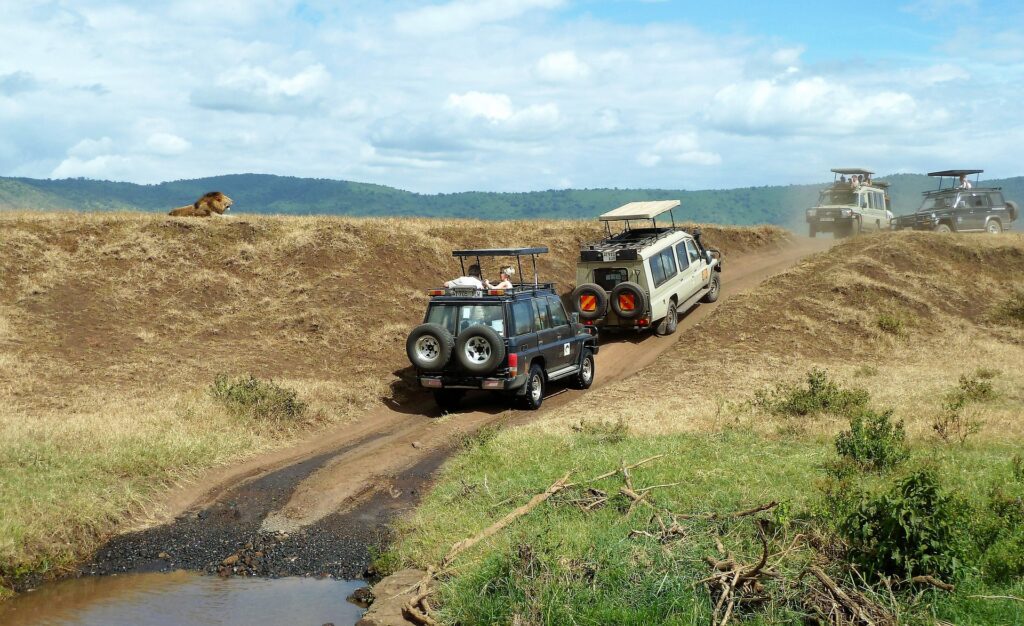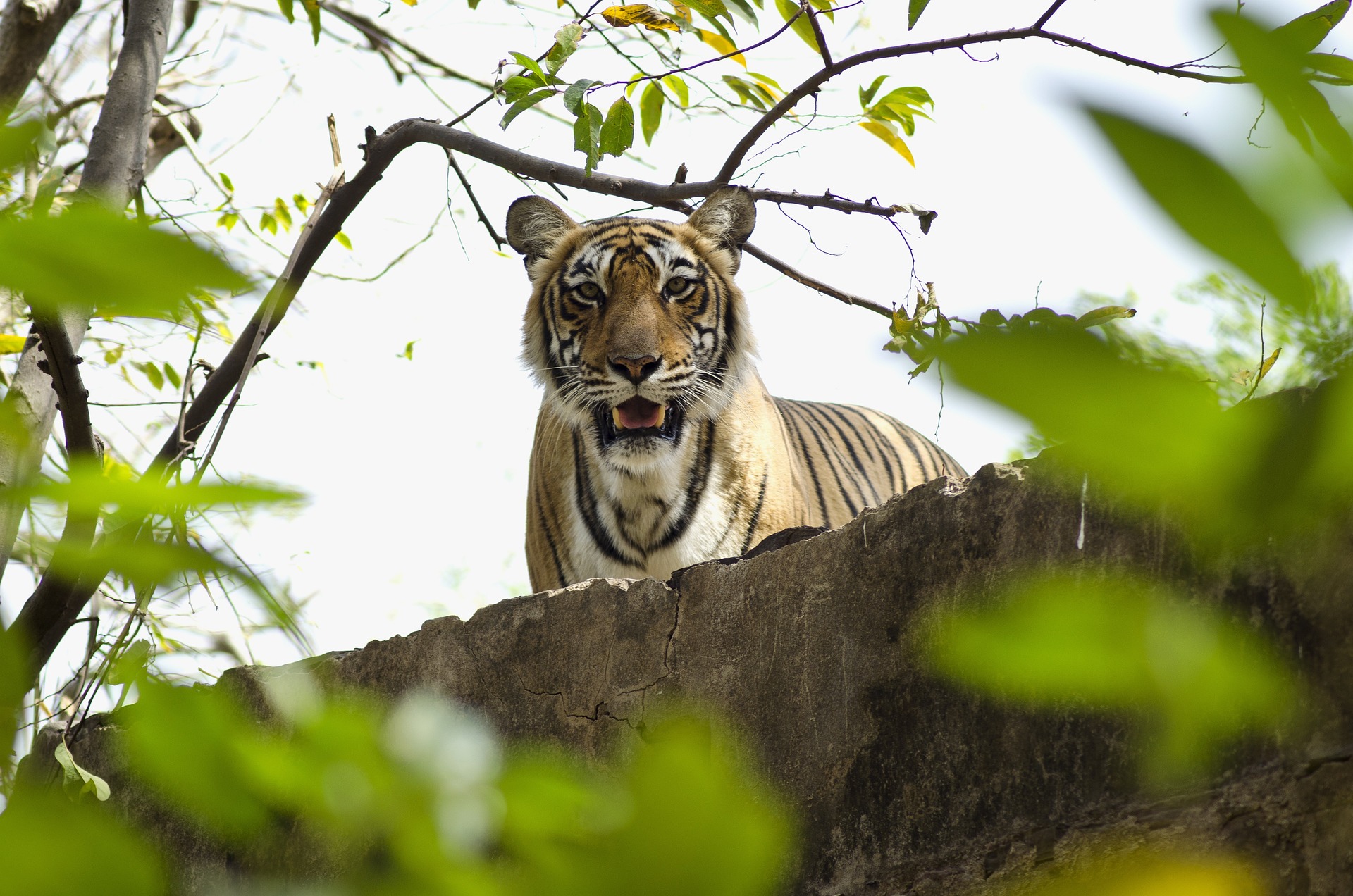Ranthambore National Park is around 13.5 kilometres from Sawai Madhopur in Rajasthan. Located at the confluence of the Aravali and Vindhya hill ranges, this is one of the best spots to see wild animals, especially since they are used to being seen. The park is approximately 400 square kilometres in size, and when merged with the Sawai Man Singh Sanctuary region, it is over 500 square kilometres in size
Ranthambore National Park is filled with structures from ancient ages. Throughout the park, there are several water features that give great relief to the wild animals during the blistering hot days of summer. A massive fort, which inspired the park’s name, rises above the park from atop a hill. Many remains from bygone ages are dispersed throughout the forest, giving it a distinct, beautiful, and mixed flavour of nature and history. Tigers in Ranthambore National Park have been observed hunting in plain view of humans.
Ranthambore Tiger Reserve’s History
The woodlands around Ranthambore fort were originally the exclusive hunting grounds of Jaipur’s Maharajas. Until the commencement of Project Tiger, their desire to conserve the game in these woods for recreation was primarily responsible for their protection. In 1973, they were included in the national project and designated as a tiger reserve, along with eight other sanctuaries and national parks. Ranthambhore National Park was established in 1980, including 274.50 square kilometres of forest. The Tiger Reserve was enlarged in 1992 to cover the adjacent Kailadevi Sanctuary in the north and Sawai Mansingh Sanctuary in the south, as well as additional woods *. It now has a land size of 1334 square kilometres.
The name of the woodlands is derived from the Ranthambhore fort.

Best time to visit ranthambore
Summer Season: Temperatures can reach 40°C during the summer months of April to June. During this season, however, the chances of seeing tigers and other animals are relatively high since they visit water holes to satisfy their thirst.
Monsoon Season: Several areas of the Ranthambore National Park are restricted to tourists during the monsoon season, which lasts from July to September. The centre of the park, which includes Gates 1-5, is closed, while the buffer zone, which includes Gates 6-10, is still available to tourists.
Winter Season: The winter season, which begins in October and lasts until March, is an excellent time to visit Ranthambore National Park because of the beautiful weather and abundant possibilities to see animals basking in the sun.

How to Get to Ranthambore?
By Air:The nearest airport to Ranthambore is Jaipur International Airport, which is around 200 kilometres away. You may access the park via taxi or private vehicle from the airport.
By Train:The nearest railway station is Sawai Madhopur Railway Station, which is about 14 kilometres from Ranthambore National Park. The park is around 200 kilometres from Jaipur Railway Station. Both have significant rail access to India’s main cities.
By Road: Ranthambore is connected by road. It is best advisable to hire a car/taxi to reach at Sawai Madhopur. The Kota-Ranthambore mega highway is only 1.5kms away.

Ranthambore is an ideal place to
- 45 species of mammals
- 340 species of birds
- 50 Species of Reptiles
- 05 amphibian species
- 50 species of Butterflies
- 300 species of plants
Jeep safari
A six-seater Gypsy is used for the Jeep safari. Jeep safaris are ideal for wildlife enthusiasts and photographers who want to see activity up up and personal. Jeep safari is smaller and more compact than canter safari.
Gypsy can cross twisting, tight routes, increasing the chances of viewing a tiger, Ranthambore’s pride. When you pick a jeep safari, you have the option of modifying the itinerary and making many stops along the way.

Jungle landscape
The Ranthambore National Park is located where the Aravali and Vindhya plateau mountains meet. The park also has several antique historical building elements that are designated as heritage sites. Ranthambhore National Park was once a hunting field for Jaipur’s royals. The Ranthambhore National Park is rich in wildlife.
The entire park is placed among antique religious structures, cenotaphs, and man-made lakes. The Ranthambhore National Park is bounded on the north by the Banas River and on the south by the Chambal River. After merging with the national park after more than a decade, some nearby woods became a part of Ranthambhore National Park. The Kaldevi and Sawai Man Singh sanctuaries were eventually added to the national park. As a result, Ranthambhore National Park has grown to become one of the country’s largest national parks.
The Ranthambhore National Park offers a wide range of area accessible, from grasslands to dry deciduous woods. The Ranthambhore National Park is one of the most popular places in the country to see tigers. The national park has an area of 1300 square kilometres. It is ideal for any adventurous visitor, animal photographer, or nature enthusiast.
Also Read: How To Plan A Truly Epic Road Trip




